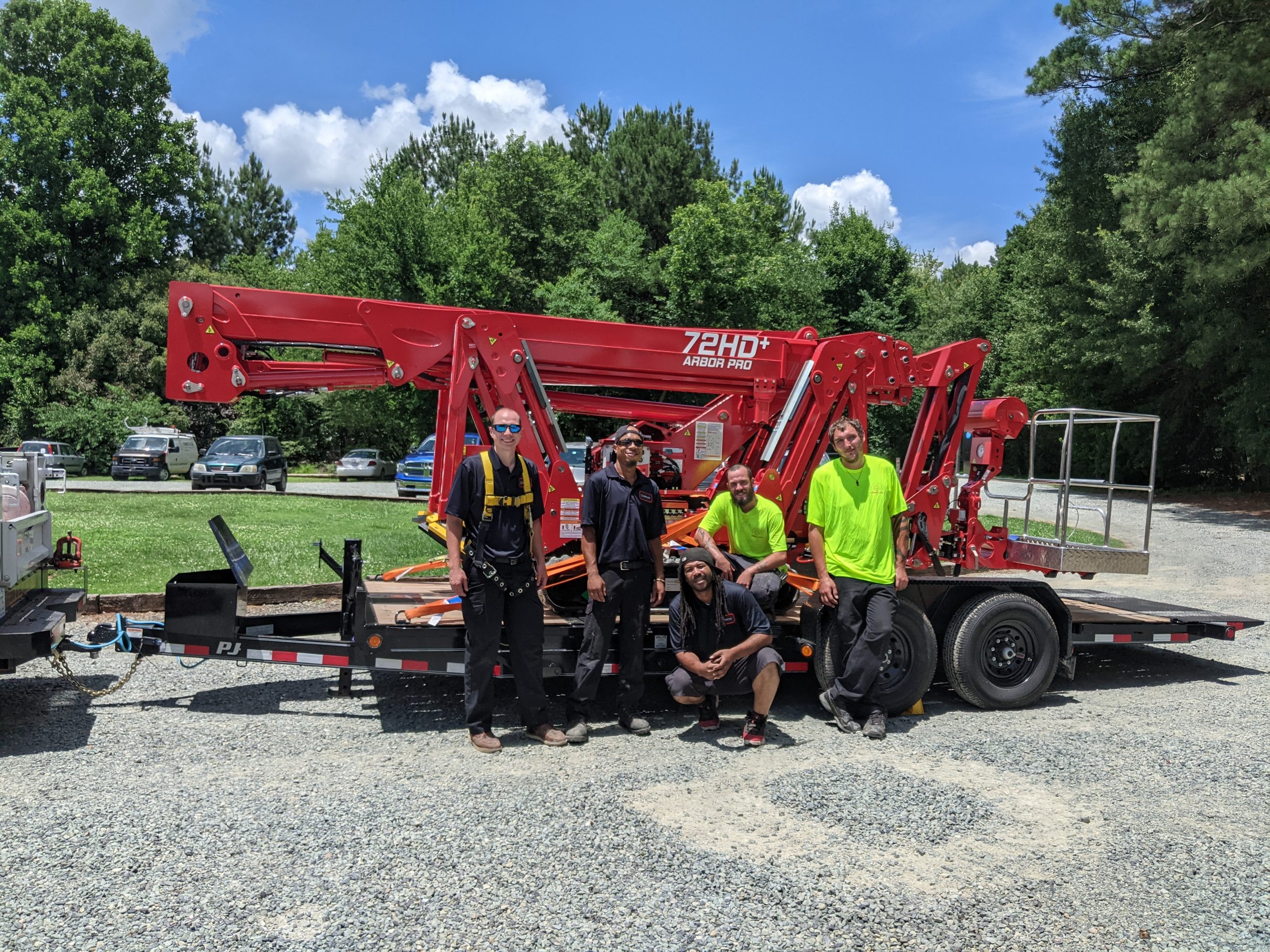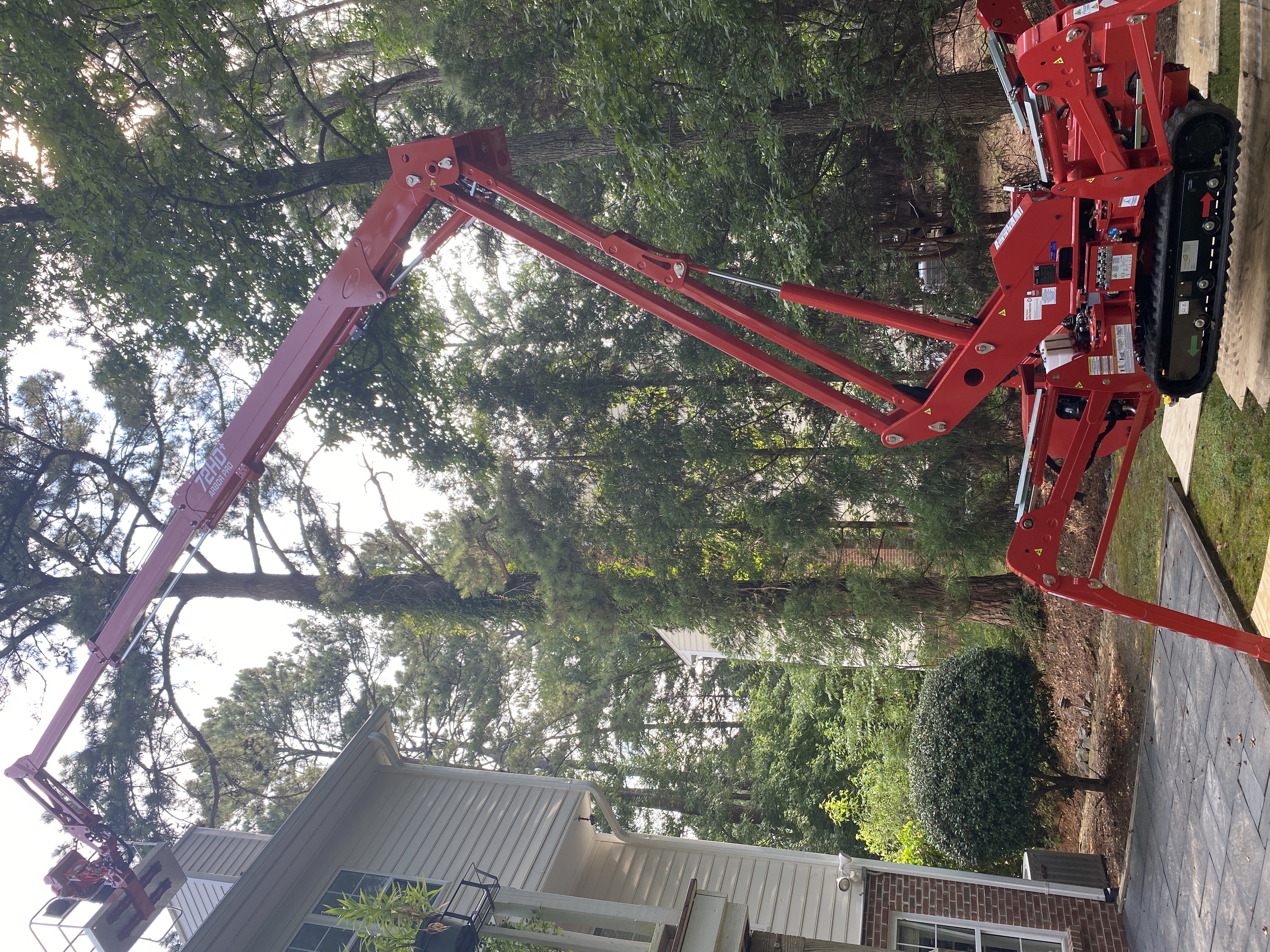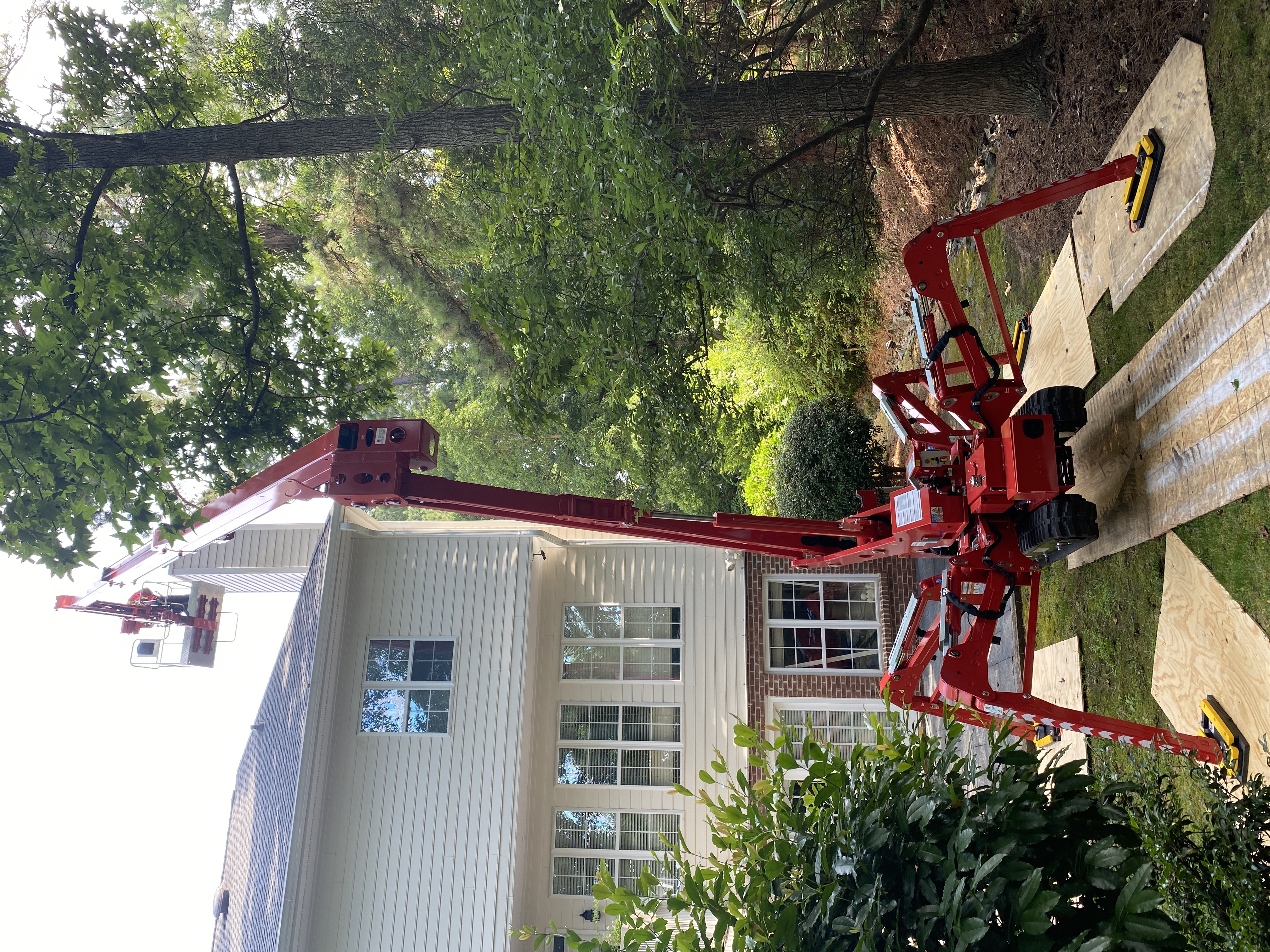The reality is that it is possible to reach many of the places that we are using the lift for today without one. In fact, we’ve done it for over 30 years now. So why make a large investment in a lift? For us, the answer is simple – safety.
Safety for our technicians was the primary reason that drove us to seriously consider purchasing a lift. As we researched purchasing the lift, we were delighted to discover that a lift can mean that everybody wins. We believe that using a lift in the right situations is a win for our employees, our customers, and the company. From that point on, the decision was a no-brainer.
For Our Employees
The main benefit for our employees is a massive impact on safety. For years, we’ve rented lifts when there was no other way to access the work area except with one. Renting a lift is expensive, clunky, and unreliable. When renting, we can’t control whether a lift is delivered on time or even if the right one is available, especially with last minute changes due to weather. In short, renting is a pain and painful enough that we only do so when we absolutely have to. Naturally, this means that technicians were sometimes tempted to push the limits of safety to get a job done.
As we pondered what we could do to get our technicians away from the temptation to push limits and lower our “normal” safety tolerance, we landed on owning our own lift as the answer. Owning a lift puts control in our hands. If we could take a lift to more jobs than just the ones that undeniably required it, our technicians would run across safety temptations less frequently, thereby significantly lowering their risk.

For Our Customers
There are two main benefits we see for our customers.
The first benefit is an impact on the quality of work. Working from a lift often means that technicians are more comfortable reaching all the areas that they need to inspect or work. We firmly believe that this has a direct, positive impact on quality of work.
The second benefit is that wear and tear on roofs is minimized or eliminated. This means that no one is walking on the roof, hauling tools and debris up and down, and it means that we are minimizing safety setups on roofs. Safety setups often require screwing in safety anchors and platforms directly to the roof. The holes that are created from these safety precautions are then repaired before technicians leave. The lift itself is the safety platform, and no roof setups are required if work can be completely performed from the lift. Afterall, customers are hiring us to fix their chimneys and gutters, not to put an elaborate setup on their roof. The lift does the hard work effortlessly so that the techs can focus on the real value of repairs.


For The Company
Many of the benefits for the company are difficult to measure. We believe that a big reason why the company exists is to serve our employees and our customers. Serving well, however, is not without its benefits. We believe that when our employees and our customers benefit, so does the company. Employees stay longer; they are more invested and better at what they do. Customers are more thrilled with the work that they get and refer us to more business.
What about financially? Lifts cost a lot of money – first to buy and then to maintain. If you are using a lift on jobs that you weren’t before, isn’t that more costly? How does the company do this sustainably and get a financial return? There are two clear ways that the company receives a direct return while staying at a fair price for each job.
The first way is speed of work. Safety setups can take a significant amount of time to set up and tear down. We often spend an hour or more setting up access to a chimney or gutter and another hour or more breaking it down. In addition, hauling tools, debris, and materials up and down roofs manually can be very tricky and time consuming. Using a lift can save a lot of time with many of these jobs. This means that we can fit more work on the schedule – increasing the company’s financial return.
The second way is simply the fact that we are not paying a rental company to rent a lift when jobs absolutely require them. This means that the company can use the money that was going to the rental company before to pay for the lift.
In Conclusion
We believe that owning and utilizing our own lift is a powerful tool that can be wielded to everyone’s benefit. We are excited to embark on this new chapter of safety, productivity, and quality. Also check out our Lift FAQ for some commonly asked questions about using lifts.

